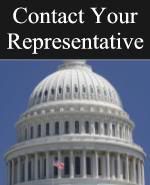New evidence of immigrant's growing political power.
Anticipating a heated campaign season where immigration reform is bound to be a major issue, immigrant's rights groups have spent much of the summer working on voter registration in hopes to counter the ever increasing anti-immigration rhetoric coming from the right. It now appears their work may not be for naught.
A new study released Wednesday by the Illinois Coalition of Immigrant and Refugee Rights (ICIRR) looked at the political ramifications of the changing demographics of the Prairie State, and warned that, "Political parties that are identified with anti-immigrant rhetoric in Illinois or that engage in anti-immigrant demagoguery for short term political gain will consign themselves to permanent political minority status in Illinois."
Based on the recently released U.S. Census figures for 2005, the research brief, titled “Marching Towards the American Dream: Illinois Immigrant Citizens Settle in Chicago Suburbs” found that immigrants are fast becoming the critical voting block in Chicago’s suburbs and much of Illinois.
tags: immigration, ICIRR , IL-7 , IL-10, IL-8, IL-14
Almost all of the immigrant growth took place in the suburbs, where the 5 year population growth of immigrants was 193,000 people, a significant 24% increase. Even more significant politically was the stunning growth of suburban immigrants who are naturalized U.S. citizens. There are now some 460,000 naturalized citizens in the Chicago suburbs, a 38% increase over just 5 years ago. In DuPage County the number of immigrant citizens jumped from 61,051 to 91,234, an astounding 49% increase in just 5 years.
Immigrants and their U.S. born children are the new “swing” voters in the hotly contested suburban Congressional seats. They now comprise 44% of the population in the west suburban 7th Congressional District being vacated by Cong. Henry Hyde; 40% of Cong. Mark Kirk’s 10th CD; and 33% of Cong. Melissa Bean’s 8th CD. In addition, Cong. Dennis Hastert’s 14th CD is now 30 % immigrants and their children.
Link (MS Word doc) The study further confirms a national trend that shows much of the increase in foreign-born population in the last ten years has taken place outside of the urban centers that were the traditional home to large immigrant populations. This trend was first documented in the 2000 Census which showed a shift of the foreign born population into more rural and suburban areas, particularly in the South and Midwest.
The study further confirms a national trend that shows much of the increase in foreign-born population in the last ten years has taken place outside of the urban centers that were the traditional home to large immigrant populations. This trend was first documented in the 2000 Census which showed a shift of the foreign born population into more rural and suburban areas, particularly in the South and Midwest.
According to author of the report, Joshua Hoyt, executive director of ICIRR, this population shift is significant because the traditionally Republican strongholds of the suburbs are now competitive for Democrats.
"We're riding the crest of a tsunami," said Hoyt, "Immigrants in Illinois are achieving the American dream of learning English, becoming American citizens and settling in the suburbs with their children.
"Immigrants are the new swing voters, the new soccer moms and NASCAR dads."
And while Chicago is often heralded as a city of immigrants, its total foreign-born population actually dipped 5 percent in the last five years, the first such drop during the wave of immigration that began in 1965.
Most important politically is the rise in the number of immigrants who have become U.S. citizens, making them eligible to vote. In the last five years the number of naturalized citizens in Illinois rose 23.1 percent, to 736,161.
But the real growth has been in the suburbs.
While Chicago only experienced a 4 percent increase in naturalized citizens of voting age during the period, the suburbs saw a boom of 37.5 percent.
Chicago Sun-Times
Hoping to capitalize on this demographic shift, this past summer a coalition of immigrant's rights groups launched the "We Are America" campaign in an effort to "increase the numbers of immigrant citizens and voters by one million for the 2008 elections" nation-wide.
In Illinois, the ICIRR, in partnership with the Employees International Union (SEIU) launched the “New Americans Democracy Project.” The project managed to register 8,000 new voters over the past eight weeks, on top of the 33,000 registered in 2004 and 2005.
The introduction to the report gives a warning to those who continue to use the debate over immigration reform for quick political gain:
"Immigrants are marching towards their American Dream: learning English, becoming citizens in record numbers, and settling down in the suburbs. The stunningly high numbers of new Americans moving to the suburbs and the large number of their U.S. born children is fundamentally changing the political landscape of our state, because they can all vote!
Politicians who ignore the pressing need for immigration reform in Illinois, including family reunification and a path to earned citizenship for the undocumented, now ignore huge numbers of their own constituents. Key “swing” Congressional Districts in Chicago’s suburbs (including those of Congressmen Hyde, Kirk, and Bean) are competitive for Democrats because of new immigrant voters. Political parties that are identified with anti-immigrant rhetoric in Illinois or that engage in anti-immigrant demagoguery for short term political gain will consign themselves to permanent political minority status in Illinois."
"We are in a time when politicians like Illinois’s Dennis Hastert, Speaker of the U.S. House of Representatives, believe they can exploit anti-immigrant feeling for cheap political gain,” said Hoyt, “But politicians in Illinois need to be aware that immigrants and their children are now the key swing vote in the key battleground districts for Congress.”
ICIRR President Juan Salgado adds that "it is time for Speaker Hastert to move past stale partisanship and work for bi-partisan solutions.”
Key findings of the Research Brief included:

































3 comments:
I majored in urban issues at a downtown Chicago school and many of my in-laws still live in Chicago and the burbs (...at least 7 of whom have become naturalized citizens in the past 10 years). We return a few times per year and the metro area has changed dramatically. My own observations would support the findings of this study.
That being said, I was sad to see the statistics about the immigrant decline in Chicago itself. I think the reason for this is the urban renewal (read: tearing down of projects and less desirable neighborhoods to build swank townhomes).
History will tell if the displacement of numerous communities was a noble sociological experiment or not.
For now, I have my doubts.
same appears true in NY area. Large migration out of the city to suburbs like Long Island and Jersey.
Probably for the same reasons ... gentrification of many areas of the city.
WoW! Way to make up "Facts" ! ~rolls eyes... -
Post a Comment